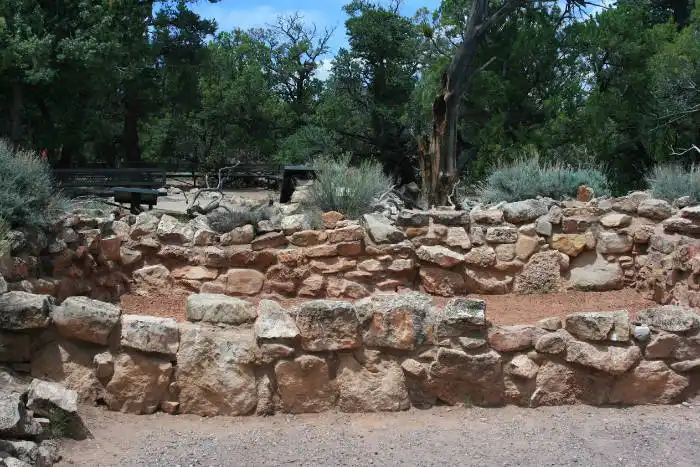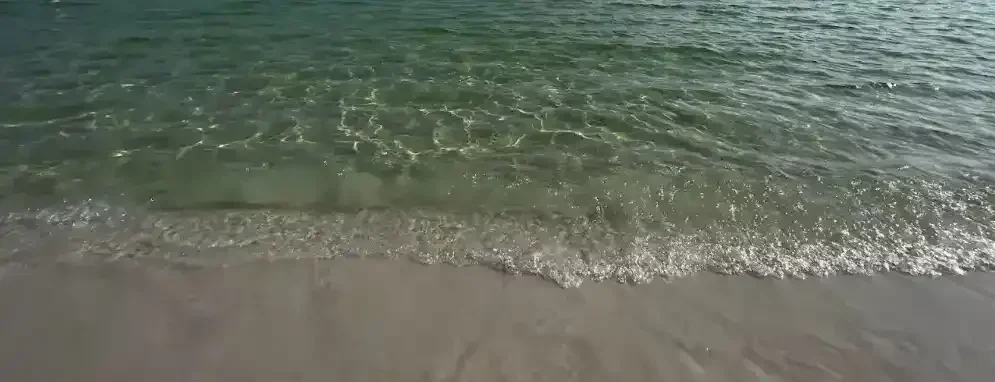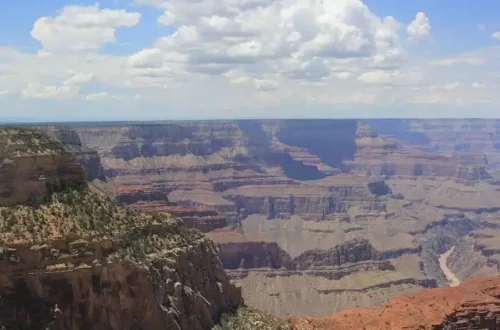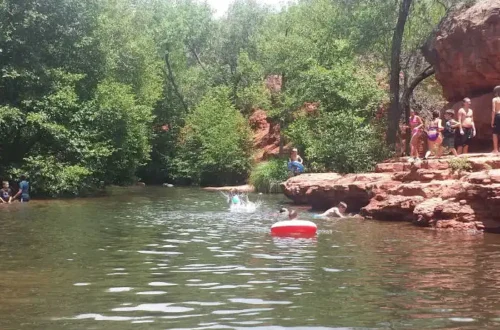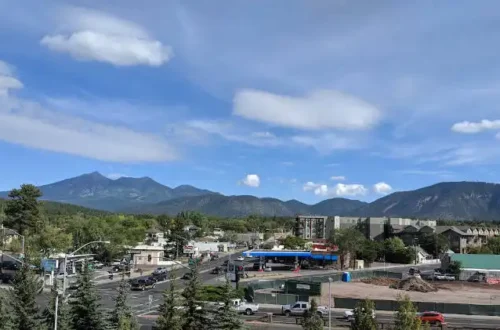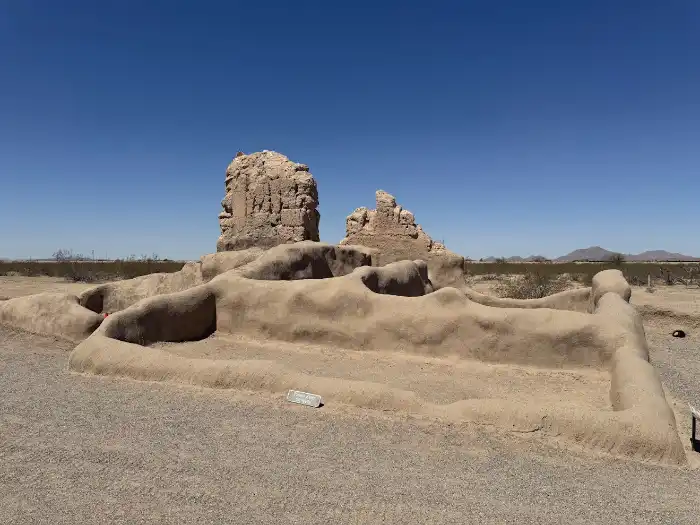
Arizona Cliff Dwellings – Hidden Ancient Sites to Explore
Here in Arizona, the desert sun and rugged cliffs hold stories older than memory. Native American Arizona cliff dwellings, petroglyphs, and cultural sites are like open history books carved into stone.
There’s something truly magical about standing in a place where ancient people once lived, prayed, and built their homes into the landscape.
This post may contain affiliate links. Please read our disclosure policy.
Arizona Prehistoric Tribes
I love exploring the history of an area and that includes learning about their early inhabitants, and how they lived. Lucky for us, many of them are incredibly well-preserved and ready to explore.
Long before Arizona had cities or highways, it was home to thriving prehistoric cultures. Each left behind their own unique mark on the land from villages built into cliffs to art etched into stone.
Some of the most well-known ancient tribes include:
- Pueblo
- Hohokam
- Mogollon
- Patayan
- Sinagua
The sites they left behind give us a breathtaking peek into how they lived, farmed, created art, and connected with the natural world.
Types of Native American Cultural Sites & Ruins
Arizona is rich with different kinds of ancient sites. Whether you’re hiking through desert canyons or standing at the base of a towering cliff, you’ll find that every spot has a story to tell. Here’s a quick guide to the types of cultural treasures you can discover:
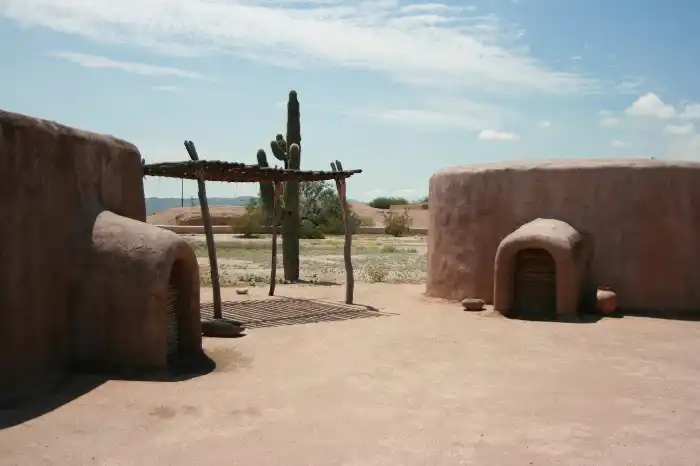
What are Cliff Dwellings?
Imagine towering walls of stone, and tucked into them actual homes! Cliff dwellings are ancient houses built right into the sides of cliffs, blending so beautifully with the rock that you might miss them if you aren’t looking closely.
Cliff dwellings are hands-down my personal favorite to visit. There’s just something awe-inspiring about seeing those rooms carved into the stone, imagining people laughing, cooking, and living their everyday lives in those spaces hundreds of years ago.
Cliff Dwellings in Arizona
- Walnut Canyon
- Montezuma’s Castle
- Tonto National Monument
- Palataki
What are Pueblos?
Pueblos are ancient villages, usually made from stone or adobe and timber, built close together in community-style layouts. They have flat roofs. Some pueblos are sprawling multi-room complexes, while others are smaller and tucked neatly into the landscape.
Pueblos & Arizona Ruins
- S’edav Va’aki Museum
- Casa Grande Ruins
- Elden Pueblo
- Tuzigoot
- Wupatki
What are Kivas & Ceremonial Sites?
Kivas are round, often underground rooms that served as sacred gathering places for ceremonies and important community meetings. These were places of stories, songs, rituals, and teachings. An example of a kiva can be see at Tusayan Ruins in the Grand Canyon.
Petroglyphs
Ancient rock art. Petroglyphs are symbols, figures, and designs carved or pecked into stone surfaces by ancient artists. From animals to spirals to abstract designs each petroglyph holds meaning, though many interpretations remain a mystery.
Some tell stories. Others might map water sources or ceremonial sites. All of them remind us that art has always been a part of everyday life.
Native American Cultural Sites & Arizona Cliff Dwellings
From cliff dwellings to expansive pueblos below is a list of some of the best preserved Native American ruins in Arizona.
- Pueblo Grande Museum and Ruins
- Deer Valley Petroglyph Preserve
- Casa Grande Ruins
- Tonto National Monument & Cliff Dwellings
- Montezuma Castle
- Tuzigoot National Monument
- Palatki Heritage Site
- Honanki Heritage Site
- Walnut Canyon
- Wupatki National Monument
- Tusayan Ruin
Where to See Arizona Pueblos
Phoenix Indian Ruins: S’edav Va’aki Museum, formerly known as Pueblo Grande Museum
The Hohokam style is prevalent in the Phoenix area. S’edav Va’aki Museum is in downtown Phoenix. This interesting museum is built next to native archaeological ruins that are best explored in the cooler months.
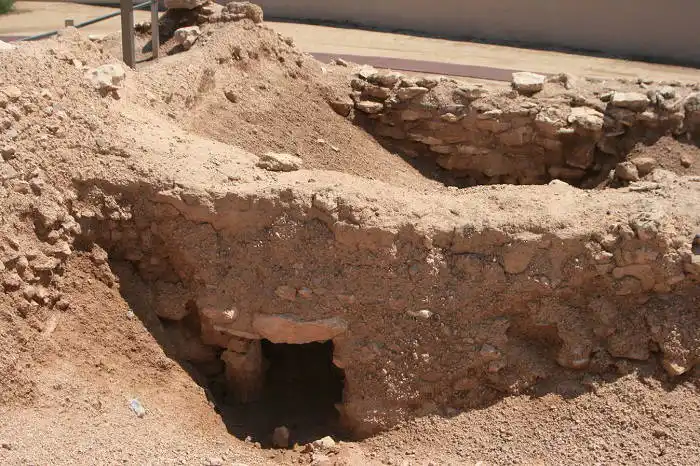
Casa Grande Ruins
Casa Grande Ruins are just southeast of Phoenix. This national monument preserves a group of Hohokam structures abandoned in the mid 1400’s. The “big house” is the 4 story caliche structure.

Elden Pueblo
An ancient Sinagua village that was a major trading center near Flagstaff. This pueblo village was inhabited from AD 1070 to 1275. A short walk from the parking lot to view 14 pueblo ruins.
It is a self-guided tour. You can download the map from the sign at the trailhead. Elden Pueblo is just six miles north of Flagstaff off of 89A.
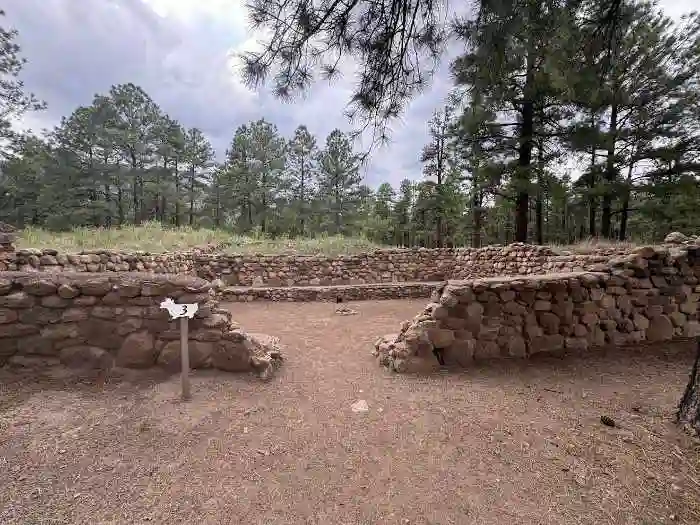
Tuzigoot National Monument
If you’re in Clarkdale, the Tuzigoot National Monument is a great site to explore. Just over 20 miles from Montezuma’s Castle, this scenic spot gives you beautiful views of the valley.
You can explore the remnants of one of the largest pueblos built by the Sinagua. Learn more about Tuzigoot.
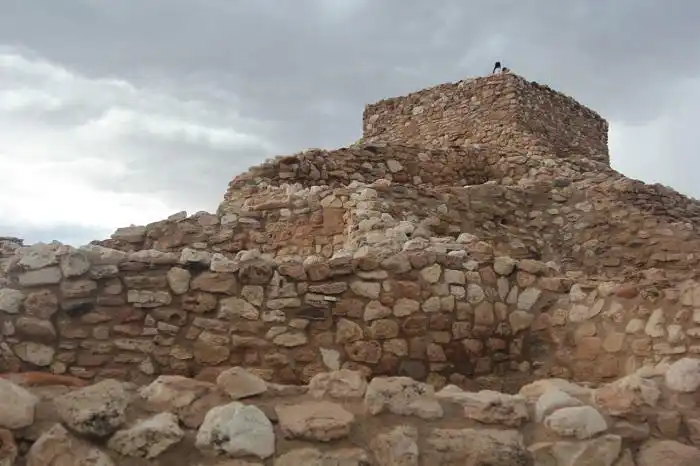
Wupatki National Monument
Wupatki National Monument was a large farming community surrounded by small dwellings. At one time, more than 2,000 people called this area home. Read more about Wupatki National Monument.
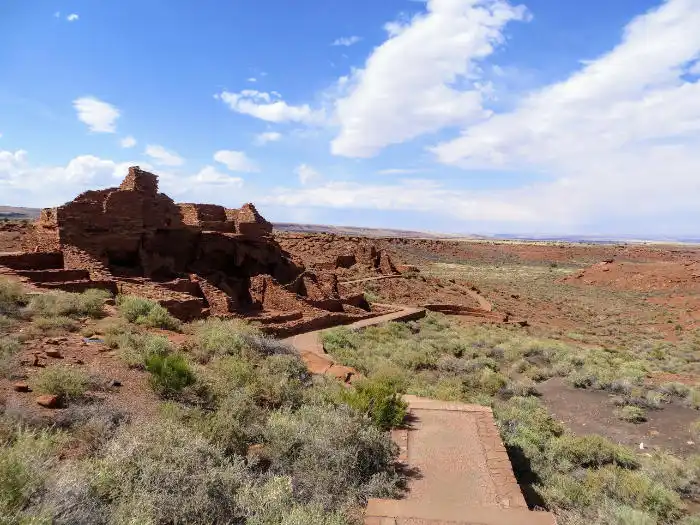
Where to See Arizona Petroglyphs
Deer Valley Petroglyph Preserve in Phoenix
If you want to see petroglyphs in the Phoenix area stop by the Deer Valley Petroglyph Preserve. This 40-acre preserve is tucked away behind north Phoenix neighborhoods in Hedgpeth Hills.
Learn about the southwest’s past in the archaeology museum. A short hike to petroglyphs makes this a great family fun activity in Phoenix.
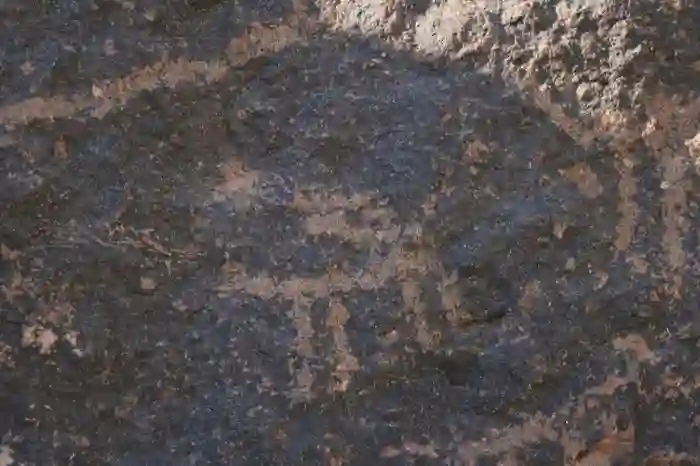
The preserve has over 1500 petroglphs. You can take a short .25 mile walk. The path is dirt and you can easily spot the petroglyphs in the rocks along the path.
In Arizona you can view three types of petroglyph styles. These include:
- Archaic style dating from 5000 BC to AD 300
- Hohokam dating from AD 300-1450
- Patayan dating from AD 300-1450
Where to See Arizona Cliff Dwellings
All of these sights are fascinating. So far, our favorite cliff dwellings are Walnut Canyon, Palatki Heritage Site, and Tonto National Monument.
Tonto National Monument & Cliff Dwellings
If you take the epic Apache Trail road trip, which I highly recommend, you will end up near these amazing cliff dwellings. The Tonto National Monument and Cliff Dwellings have a great view of Roosevelt Lake.
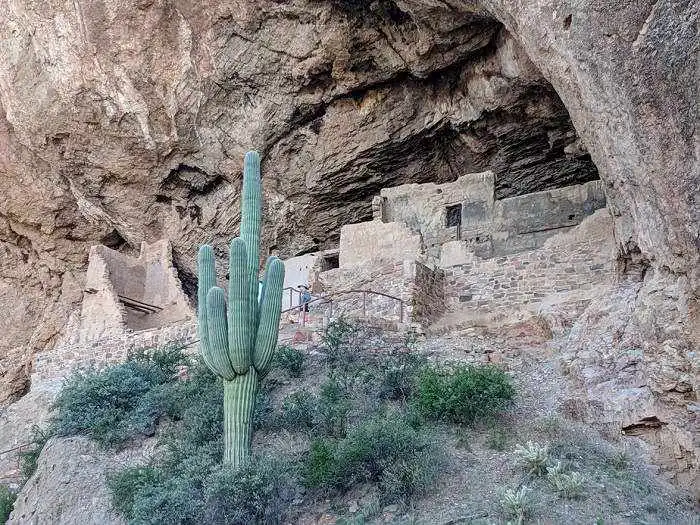
Montezuma’s Castle: Arizona Cliff Dwellings Verde Valley
Sedona and the Verde Valley are home to several Native American cultural sites. Montezuma Castle’s easy access from the freeway and the fact that it is the most well-preserved Sinagua complex in Arizona makes this one of the most popular ruins to see.
If you’re here don’t forget to take a drive and hike the shaded area of Montezuma’s Well. Read more about Montezuma’s Castle
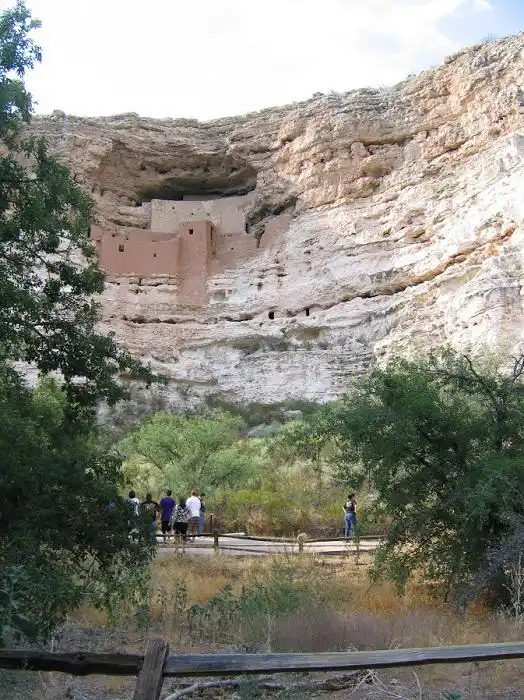
Palatki Heritage Site – Sedona Cliff Dwellings
Palatki Cliff Dwellings and Honanki Heritage Site are often visited on the same day. Both are in Sedona and will require a spirit of adventure to get to. You can view ancient Sinagua ruins and petroglyphs at this site.
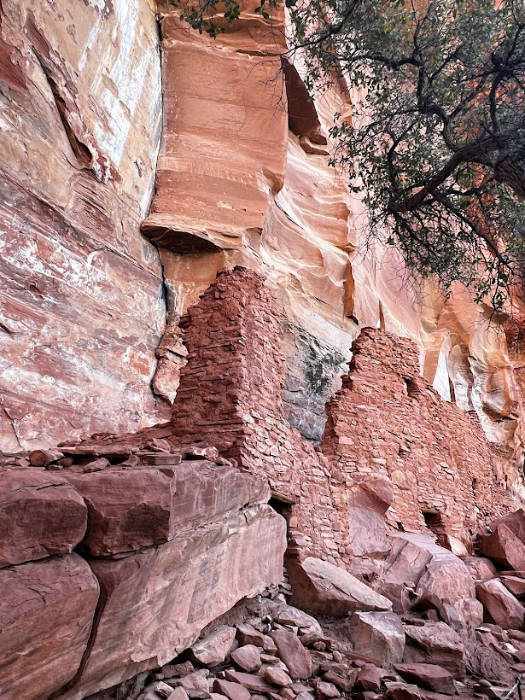
Honanki Heritage Site – Sedona Cliff Dwellings
To see Honanki Heritage Site you will need a high clearance vehicle. This site is free to visit. While it is only a few miles from Palatki the drive is about 20-30 minutes due to the rough roads.
If you would rather not take your vehicle on this road it is a popular spot for the Sedona jeep tours.
Walnut Canyon Flagstaff Arizona Cliff Dwellings
Flagstaff and the Grand Canyon area are home to several Native American cultural sites. Walnut Canyon is just east of Flagstaff. This fun hike takes you to view 700-year old Sinagua cliff dwellings and yes you can walk right up to many of them.
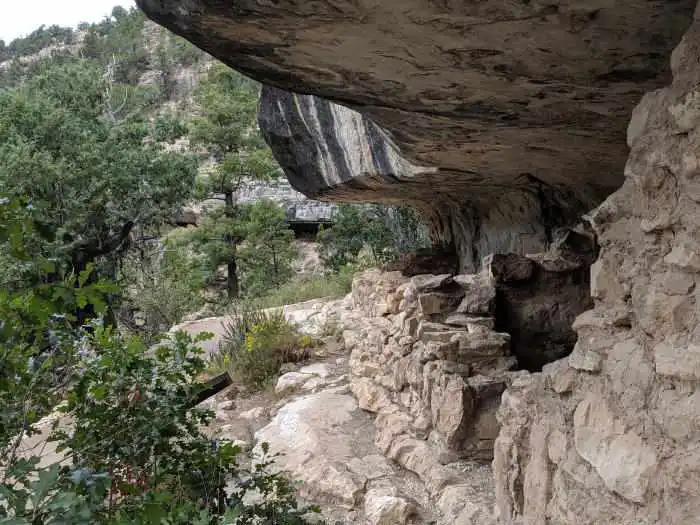
Where to See Kivas & Ceremonial Sites
Tusayan Ruin
Tusayan Ruin is near the east entrance of the Grand Canyon. This Native American ruin gives you a glimpse of how the Pueblo Indians lived some 800 years ago.
